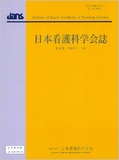Japanese
English
- 販売していません
- Abstract 文献概要
- 参考文献 Reference
要旨
目的:2型糖尿病患者を対象にサーモグラフィや血流計を用いたフットケアプログラムを実施し,血管障害の理解やフットケア行動,セルフケア能力の介入効果を検討した.
方法:対象者は外来通院中の2型糖尿病患者16名であった.外来受診日ごとに60分のフットケアプログラムを4回実施した.血管障害の理解についてはVASを用い,フットケア行動およびセルフケア能力は,それぞれSDSCAおよびSCAQ-30で評価した.
結果:介入後,「自分の血管や血流がわかる」という主観的感覚(p < 0.001),フットケア行動(p < 0.001)およびセルフケア能力(p < 0.001)の合計得点平均値は有意に上昇した.また,フットケア行動得点の変化は罹病期間と有意な負の相関関係(r = −0.66, p < 0.001)が認められた.
考察:本フットケアプログラムは,糖尿病患者の身体への関心を高め,フットケア行動やセルフケア能力を改善する看護支援となる可能性が示唆され,より早い介入の必要性が示された.
Purpose: The purpose of this study was to investigate the effects of a footcare-programs intervention using thermography and blood flow meters on the self-care behavior for foot and the self-care ability of patients with type 2 diabetes
Methods: This study included sixteen outpatients with type 2 diabetes mellitus. The care program lasted for 60 minutes per session and was performed every 4 to 8 weeks for a total of four sessions. Subjective assessments of better understanding of the body prone to vascular disorders using the visual analog scale (VAS), self-care behaviors using the summary of diabetes self-care activities (SDSCA), self-care ability utilizing the self-care agency questionnaire 30 (SCAQ-30). All data were collected at baseline and postintervention.
Results: After the intervention, the subjective sensation (VAS) of “understanding one's blood vessels and blood flow” enhanced significantly (p < 0.001), and self-care behavioral scores for foot care and self-care ability scores improved significantly (p < 0.001) compared to baseline. There was a significant negative correlation (r = -0.66, p < 0.001) between the degree of improvements in foot care behavioral score and disease duration.
Conclusion: Our results suggest that this foot care program is inferred to have greatly improved self-care behaviors regarding foot care, leading to the prevention of diabetic foot ulcers in patients at the early stages of diabetes.
Copyright © 2022, Japan Academy of Nursing Science. All rights reserved.


